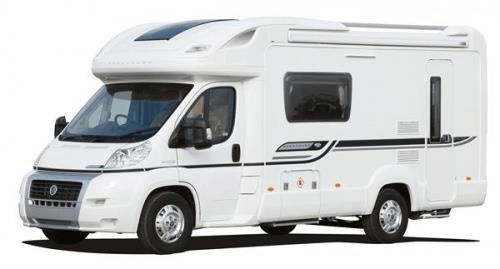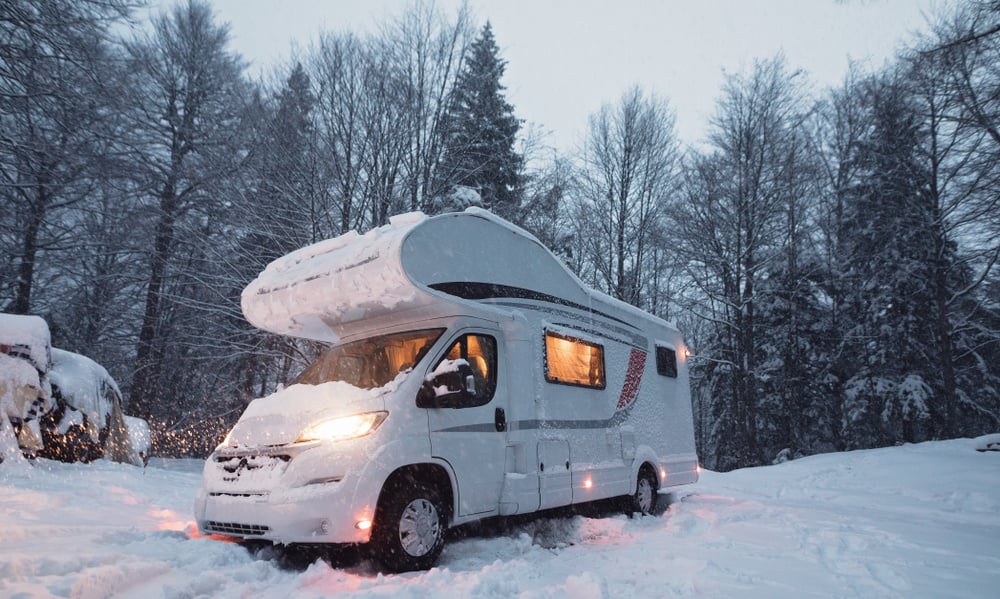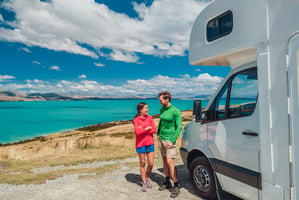If you’re a cat owner, you might wonder if it’s possible to bring your feline companion along for...
As the colder months approach and the main holiday season draws to a close, you might be thinking that it’s time to start preparing your motorhome for winter hibernation. Storing your motorhome properly during the winter months is essential to maintaining its condition, and also for ensuring it’s ready for action when the warmer weather returns. Whether you store your motorhome in a garage, in dedicated storage or on a driveway, following a few key steps will help to prevent any damage to it and hopefully prolong its lifespan.
Here’s our guide to preparing your motorhome for the winter, covering everything from cleaning and covering, to storage and what to remove from the inside.
1. Give it a thorough clean
Before tucking your motorhome away for the winter, giving it a deep clean is pretty crucial. Any dirt, leaves, bird droppings or other items left on the exterior can cause damage or staining, and anything that’s left inside the motorhome that is perishable can lead to unpleasant smells.
The exterior
You can start by giving the exterior a thorough wash with a mild detergent that is safe for motorhome finishes. Pay special attention to areas prone to dirt build-up, such as around the wheel arches, the windows and the roof. Remove any moss, as this can be corrosive over time. Use a soft brush or sponge to avoid scratching the surface, and be sure to rinse thoroughly to remove all of the soap residue.

The interior
Inside, clean all the surfaces including the worktops, cupboards, floors and windows. Empty the fridge and freezer, wipe them down, and leave the doors slightly open to allow airflow and to prevent mould taking hold. Clean the bathroom, hoover the upholstery and the carpets, and make sure all food (including crumbs) is removed as this could attract pests during the winter months. Put plugs in the sink and the shower to prevent any living creatures getting in via the pipes.
A clean motorhome is much easier to maintain during storage, and it will feel (and smell) much fresher when you reopen it in spring!
2. Choose whether or not to cover it
We’ve written another blog post on whether or not you should cover your motorhome, which you can find here. It’s a personal choice, but if used correctly, a quality cover can be an excellent investment as it shields your motorhome from rain, snow, frost and UV damage, keeping the exterior in good condition.
3. Decide where to store it
Choosing the right location to store your motorhome for the winter is vital, in order to protect it from both the weather and potential theft.
Outdoor storage
If you’re storing your motorhome outside, such as on a driveway or in a garden, position it away from overhanging trees or bushes to reduce the risk of damage from falling branches or excessive leaf build-up. Try to park it on a hard, even surface like concrete or gravel, which will reduce the chances of the tyres sinking into soft ground.

Indoor storage
Indoor storage probably offers the best protection, whether in a garage, barn or other secure storage facility. Keeping your motorhome out of the elements greatly reduces the risk of water damage, freezing and also sun fading. If possible, find a dry, ventilated area with good airflow to avoid damp conditions. Be aware of any known animals in the area - you don’t want rats or mice renting your motorhome out during the winter!
Wherever you choose to store your motorhome, ensure that it’s secured with a wheel clamp, steering wheel lock or another anti-theft device. Some facilities might offer additional security measures, such as CCTV or gated access, giving you extra peace of mind over the winter months.
On another note, and regardless of where it is stored, tyres can deteriorate without movement, so to help with this it’s a good idea to make sure your tyres are inflated to the maximum recommended pressure before the motorhome goes into storage, and during storage if you can top them up.
4. What to remove from your motorhome
Before you lock up your motorhome for winter, there are a few items you might want to think about removing, to both prevent damage and to also protect your belongings.
Water
Draining down the water system is essential. Any leftover water in pipes, taps, or the water heater can freeze and cause some damage, so drain down all water tanks, pipes, taps and appliances, and leave the taps in the open position in case any water has got trapped. Also, ensure the toilet system is fully drained and cleaned to avoid any unpleasant surprises come spring!
Batteries
You might want to remove the leisure battery and store it indoors in a cool, dry place. It’s also a good idea to give the battery a top-up charge every now and then to keep it in good working order.
Ideally, you would want to drive your motorhome a couple of times over the winter to keep the vehicle battery ticking over, but of course that may not be possible.
Gas bottles
Disconnect and, if possible, remove any gas bottles, storing them in a well-ventilated, dry location away from sources of heat. If the motorhome is stored in a confined space, like a garage, it’s especially important to remove any gas bottles to avoid the risk of leaks of flammable gas.
Some storage locations may not allow you to leave gas cylinders in the vehicle.
Perishable items and soft furnishings
Empty all of the cupboards, the fridge and the freezer of all food and drink. Some people remove the soft furnishings such as cushions, bedding and even curtains if they feel worried about potential damp. Alternatively, you could use moisture-absorbing products to reduce the risk of this.
Personal belongings
It’s always a good idea to remove any valuables and electronics from your motorhome. Not only will this protect them from theft, but it also reduces the chances of anything getting damaged by the cold or damp conditions.
So there it is - there’s a bit of prep needed to get your motorhome ready for winter hibernation, but it doesn’t have to be a daunting task. A little extra care now will ensure that your motorhome stays in good condition throughout the colder months, ready to hit the road again when spring finally arrives.
Happy hibernation - and here’s to many more adventures when the weather turns warm again!








